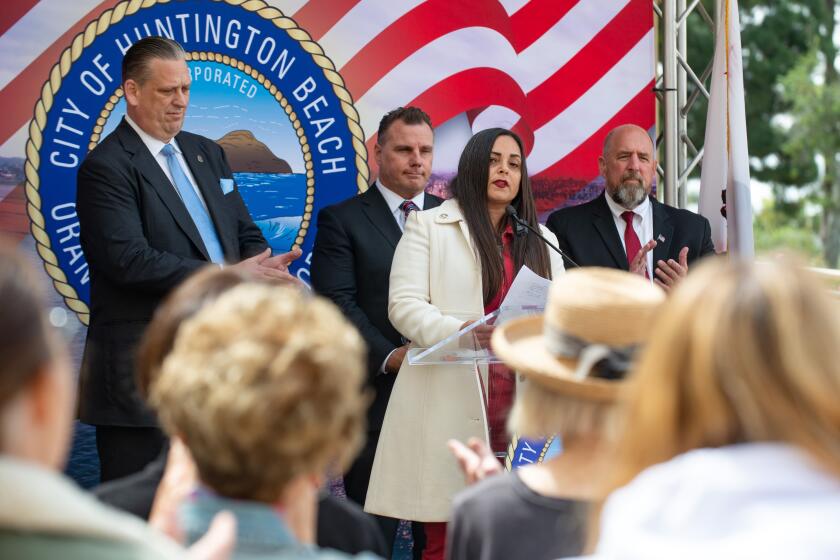City Lights: A martial artist’s eye to do it
I once took a class from a martial arts instructor who told me how he spotted trouble coming.
It started, he said, before he and his potential adversary even exchanged words or made eye contact. Rather, he could read body language from yards away — posture, gait, facial expression — and determine if he had to be on guard.
Apparently, that’s what being a lifeguard is like, too. On Tuesday I interviewed Chris Egan, captain of the California State Lifeguard Assn. team who’s heading to New Jersey for a national competition this week. I had a feeling his job entailed more than sitting on the lifeguard tower and watching for flailing limbs in the water. I was right.
More on that in a moment.
But first, the news item: Egan and 22 other lifeguards, nearly all from Huntington State Beach, will probably be in Cape May by the time you read this, competing in the United States Lifesaving Assn. National Lifeguard Championships. The four-day event invites teams from across the country to compete in relays, land and water races, simulated rescues and more.
Last year, the championships took place in Huntington Beach. You may be forgiven for missing them, considering that they took place alongside the U.S. Open of Surfing. If I could turn back the clock, I would have ordered more coverage of them in the Independent. However impressive the champion surfers may be, the heroes who help keep our beaches safe deserve equal recognition.
Egan, an Edison High School alumnus and the head of the Huntington State Beach Junior Lifeguards, has served as a Huntington State Beach lifeguard for 21 years. He works as a primary responder during the fall, winter and spring, and plays more of an administrative role during the year’s busiest season.
When he spent summers on the “front lines,” as he put it, he sometimes dove into the water as many as 50 times a day. And he used a martial artist’s eye to do it.
“You look for when people are entering the water, what they’re wearing,” Egan said. “You pay attention to what the water’s doing in addition to what the people in the water are doing. You’re prioritizing potential victims even before anything happens.”
Potential victims, he explained, include anyone without fins, which he said are essential for swimming in the ocean. When swimmers first get in the water, he studies their first few strokes to test their strength. And anyone standing in the water faces the risk of getting swept away in a riptide.
Egan doesn’t care much if the California State Lifeguard Assn. team wins this year — partly because it never has, at least not since he joined. He treasures the camaraderie instead, not to mention the fitness component.
“Fitness is a part of our job,” Egan said. “I’m a competitive guy, so there’s a competitive spirit in me as well. But I’m 36 years old, so I’m not out there competing with the 18- and 20-year-olds.”
City Editor MICHAEL MILLER can be reached at (714) 966-4617 or at michael.miller@latimes.com.
All the latest on Orange County from Orange County.
Get our free TimesOC newsletter.
You may occasionally receive promotional content from the Daily Pilot.



